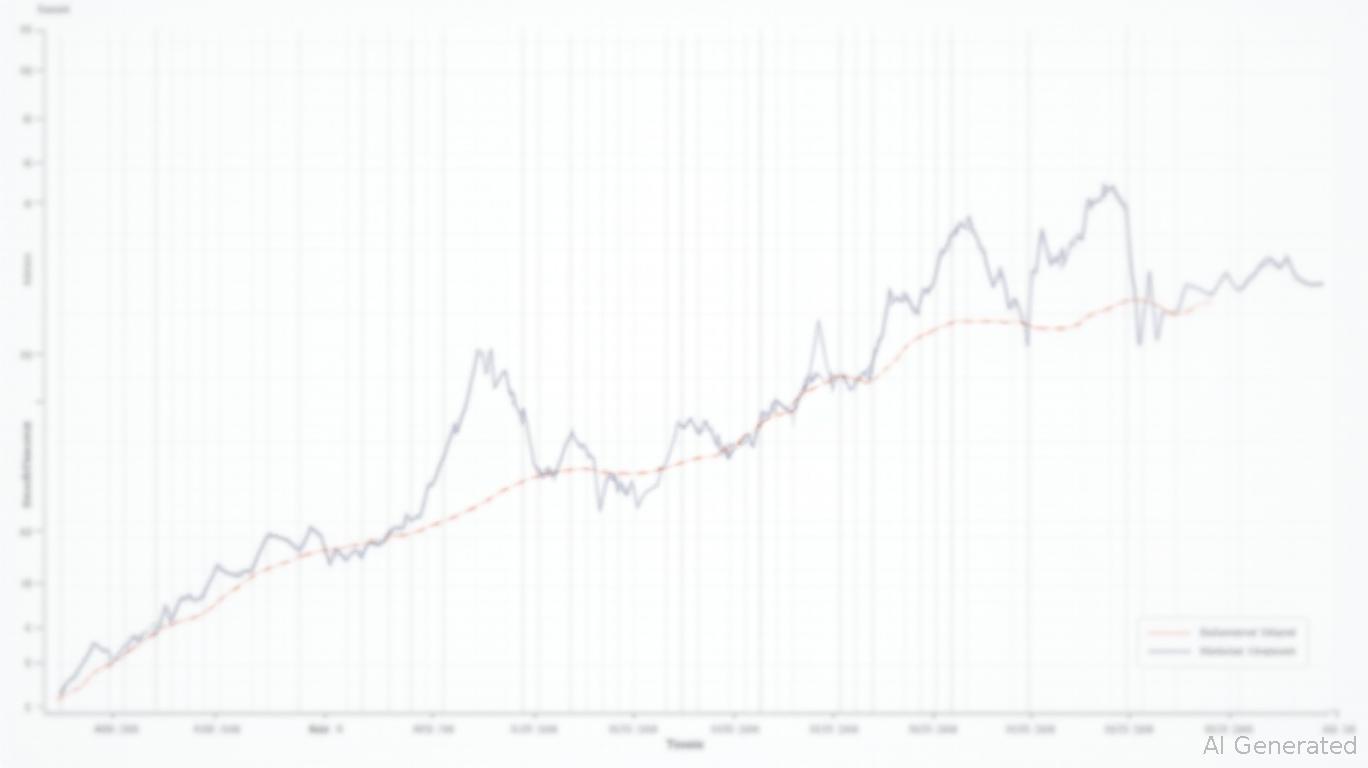Navigating Yield Volatility: The Fed's Delicate Dance Amid Crosscurrents
The Federal Reserve's June 2025 decision to hold rates steady at 4.25%-4.50% underscores a central bank caught between conflicting signals. With inflation edging closer to its 2% target and the labor market defying expectations, the Fed's reluctance to cut rates—despite market pricing for two reductions by year-end—has created fertile ground for yield volatility. Meanwhile, escalating Middle East tensions and the lingering shadow of trade tariffs threaten to prolong this uncertainty. For investors in U.S. Treasuries, navigating this landscape demands a strategic approach that balances safety with opportunity.
The Fed's Tightrope: Reluctance Meets Reality
The June dot plot revealed a median expectation of two rate cuts by year-end, a projection that hinges on two critical assumptions: tariffs won't ignite sustained inflation, and geopolitical risks remain contained. Yet neither is certain. President Trump's tariffs, while not yet reflected in core inflation metrics, could eventually squeeze supply chains and push prices higher. Add to this the destabilizing impact of the Israel-Iran conflict, which has already caused energy price spikes, and the Fed's path becomes murkier.

Meanwhile, Fed officials' internal disagreements highlight the uncertainty. While some argue that the economy's resilience justifies patience, others worry that delayed cuts could risk a sharper downturn later. This divergence is reflected in conflicting market expectations: Goldman Sachs forecasts one cut this year, while JPMorgan sees three by early 2026.
Why Treasury Yields Are Stuck in a Vortex
The Fed's cautious stance has created a tug-of-war in Treasury markets. Short-term yields are anchored by the likelihood of rates staying elevated for longer, while long-term yields oscillate between optimism about eventual cuts and fear of inflation resurgences. The result? A flattening yield curve that leaves intermediate-term bonds (5-10 years) particularly vulnerable.
Consider the math: If the Fed delays cuts, intermediate bonds face reinvestment risk as their lower coupons become obsolete. Conversely, if the Fed ultimately cuts aggressively, their prices will still lag behind the gains seen in longer-dated bonds. This no-win scenario makes them a risky bet.
The Barbell Strategy: Safety and Asymmetry in One
Investors should embrace a barbell approach to Treasuries, allocating to short-term maturities (1-3 years) and long-term (20-30 years), while avoiding the intermediate middle.
Short-term Treasuries offer two advantages:
1. Capital Preservation: Their shorter duration insulates them from interest rate shocks.
2. Opportunism: If the Fed eventually cuts rates, their yields will reset higher, providing better returns than cash.
Long-term Treasuries, meanwhile, act as a bet on the Fed's eventual easing. While their prices have already partially priced in cuts, geopolitical risks or a sudden inflation scare could send yields plunging further.
Cautionary Notes
- Watch the Tariff Timeline: If tariffs begin pushing core inflation above 2.5%, the Fed's hands may be tied, prolonging the yield curve's flattening.
- Geopolitical Triggers: A Middle East conflict escalating into a full-blown energy crisis could spike both inflation and Treasury volatility.
- Fed Independence Under Pressure: While the Fed resists political interference, Trump's rhetoric risks undermining its credibility over time.
Key Dates to Monitor
- September 17, 2025: The Fed's next meeting could mark a pivot if inflation cools further.
- December 10, 2025: A final decision point for 2025 cuts, with geopolitical developments likely in focus.
Conclusion: Pragmatism Over Prediction
In this environment, investors should avoid the temptation to call the Fed's next move. Instead, adopt a barbell strategy that capitalizes on the asymmetry of outcomes: short-term safety and long-term optionality. Intermediate-term Treasuries, caught in the crossfire of conflicting forces, are best avoided until clarity emerges.
As the Fed's dance with uncertainty continues, remember: the best investment strategies are those that thrive on volatility, not just in spite of it.

Comments
No comments yet